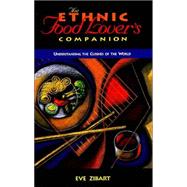Nowhere is America's rich ethnic and cultural diversity more apparent than in its restaurants. Every city and region of the United States has a unique cultural heritage - whether it's Cuban, Thai, Spanish, Italian, Indian, French or German - reflected in its dining choices. So what do you order in an ethnic restaurant, and how do you eat? The Ethnic Food Lover's Companion provides all the information you need to make every ethnic dining experience a pleasant and memorable one. In this book you will find information about what to expect in any type of ethnic restaurant; detail profiles of each ethnic cuisine, including key ingredients, spices and methods of preparation; cultural tips to put you at ease with the customs and etiquette of each cuisine; representative dishes of each cuisine defined and described; recommended complete meals from appetizer through dessert and easy recipes you can prepare at home.








